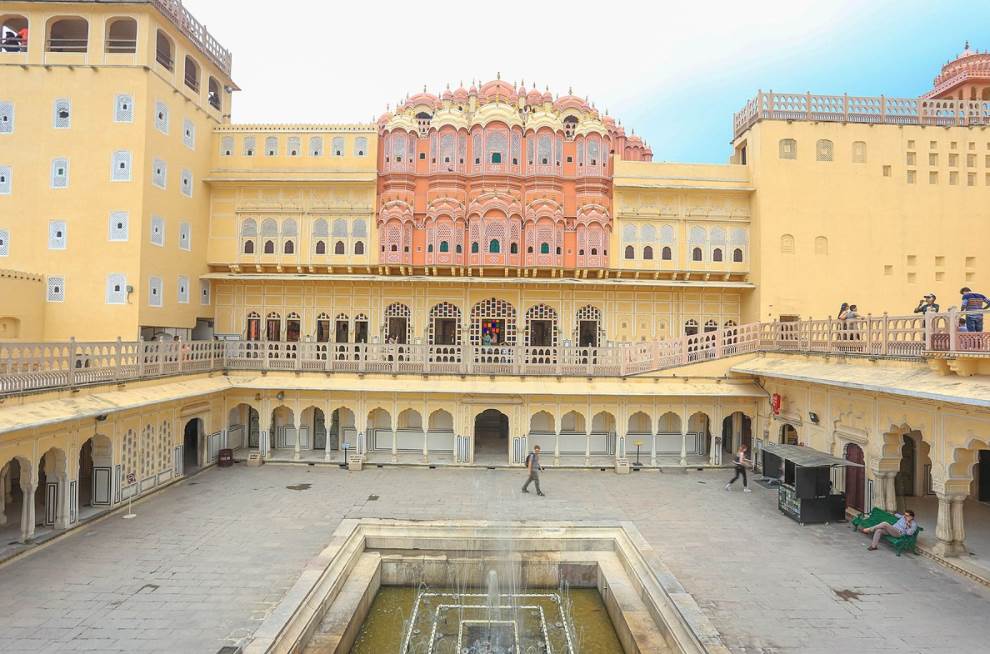Very few amazing palaces around the world look so intriguing as this remarkable structure in Jaipur, a large city in northern India. Its pink façade wasn’t just built because it looks astonishing but it had a couple of practical reasons as well.
Let’s take a closer look at some of the most interesting facts about the Hawa Mahal Palace, a fascinating structure with a remarkable architectural design.
1. It’s part of a huge palace complex in the eastern part of the city
Hawa Mahal is a palace located in the eastern part of Jaipur, the capital of the Indian state of Rajasthan. This state covers about 10% of the land area of the entire country and is the 7th most populous state in India.
Jaipur is the largest city in this state and has a population of over 3 million inhabitants. It’s referred to as the “Pink City,” mainly because of the pink sandstone that has been extensively used for the construction of the city’s most important buildings.
This particular palace with its incredible pink façade is part of the much larger City Palace, a complex of buildings that dates back to the founding of Jaipur in the year 1727. It was the official seat of the Maharaja of Jaipur until 1949 and featured all of the city’s administrative buildings as well.
Today, this palace complex serves as a museum and is a treasure of architectural marvels.
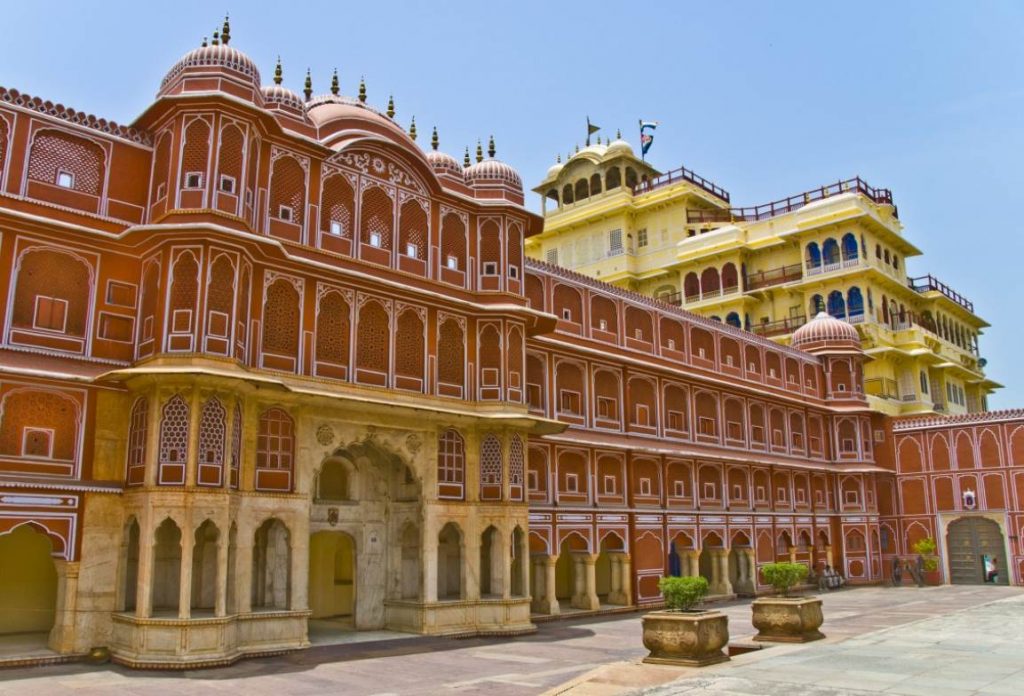
2. The palace was commissioned by the grandson of the founder of Jaipur
Jaipur is a popular tourist destination in India and the City palace is one of the most popular tourist attractions. The remarkable Hawa Mahal is one of the ultimate symbols of the symbol, especially its pink sandstone façade which gives the building such a distinctive appearance.
The palace was commissioned by Maharaja Sawai Pratap Singh (1764-1803) in 1799. He was the grandson of Maharaja Sawai Jai Singh II, the ruler of the Kingdom of Amber who moved his capital to Jaipur in 1727, essentially founding the city.
This also means that the City Palace was built by the grandfather of the man who commissioned Hawa Hawal and was built as an extension of this immense fortified complex.
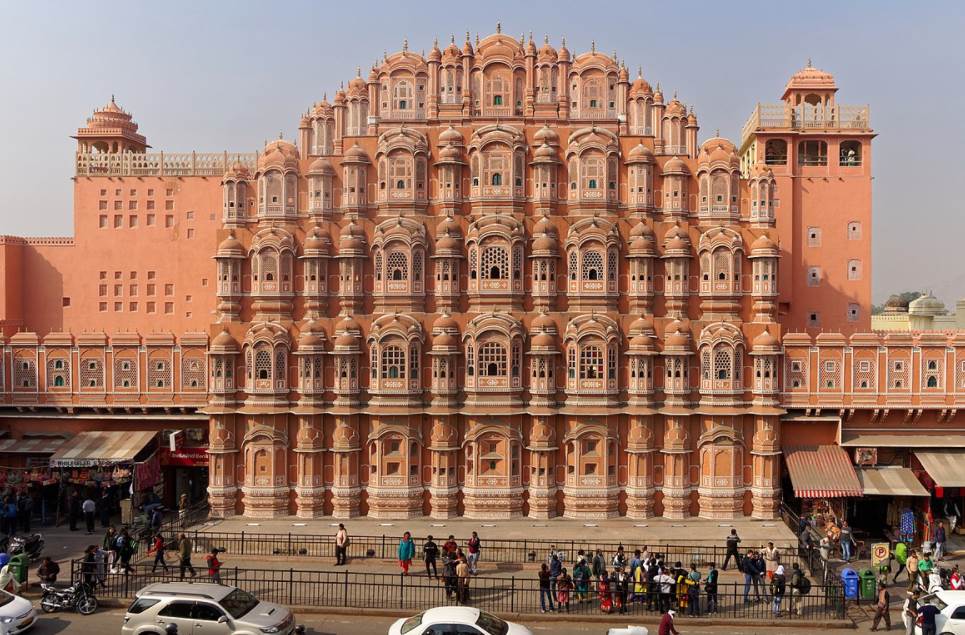
3. The pink sandstone façade features nearly 1,000 small windows
The main attraction of the palace is the pink sandstone façade which serves as a symbol of the “Pink City.” This incredible architectural feature has 953 windows integrated into it which feature ornamented latticeworks.
These windows are referred to as Jharokhas, a stone window that is integrated into the façade of a building so it overlooks the street below (or any other open space for that matter).
This type of window is similar to the French and English types of windows known as “oriel windows,” a type of bay window that protrudes from the façade of a building.
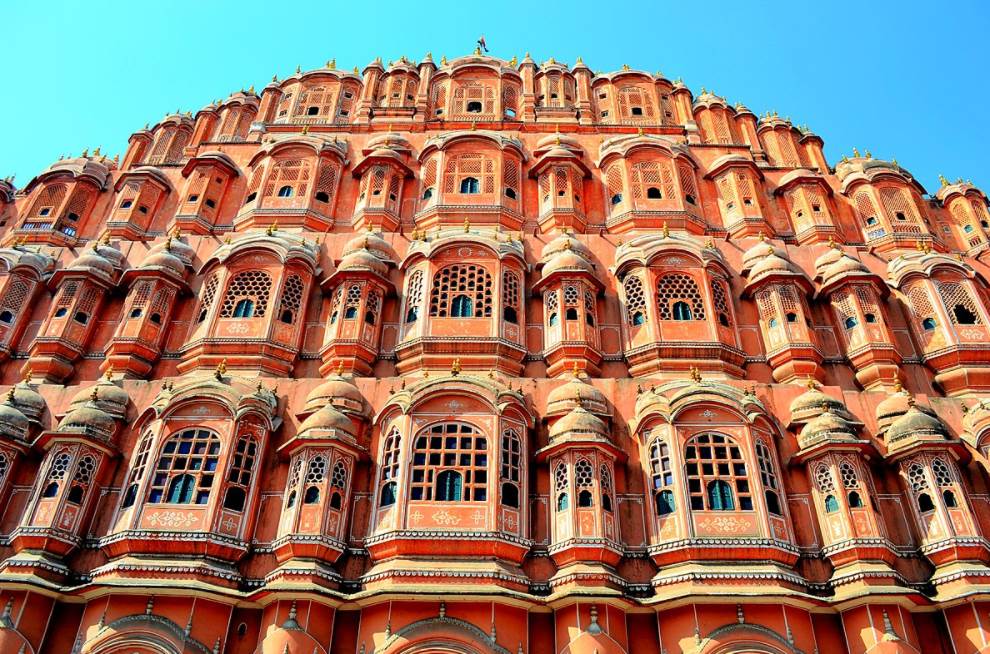
4. The windows in the façade had a particular purpose
Although Maharaja Sawai Pratap Singh wasn’t able to enjoy his newly built palace for a long time as he died 4 years after it was completed, he did think about the ladies of the royal court.
The 959 windows in the honeycomb-like façade were integrated for the sole purpose of letting the women of the court enjoy festivities below. After all, they had to comply with the strict rules of the purdah.
This tradition made it mandatory for women to stay out of sight of strangers by either covering their entire bodies or by staying in a separate room. The windows allowed them to get a birds-eye view of happenings down the street below without being seen themselves.
The rooms also extended into the so-called “Zenana,” the section of the palace reserved for women.
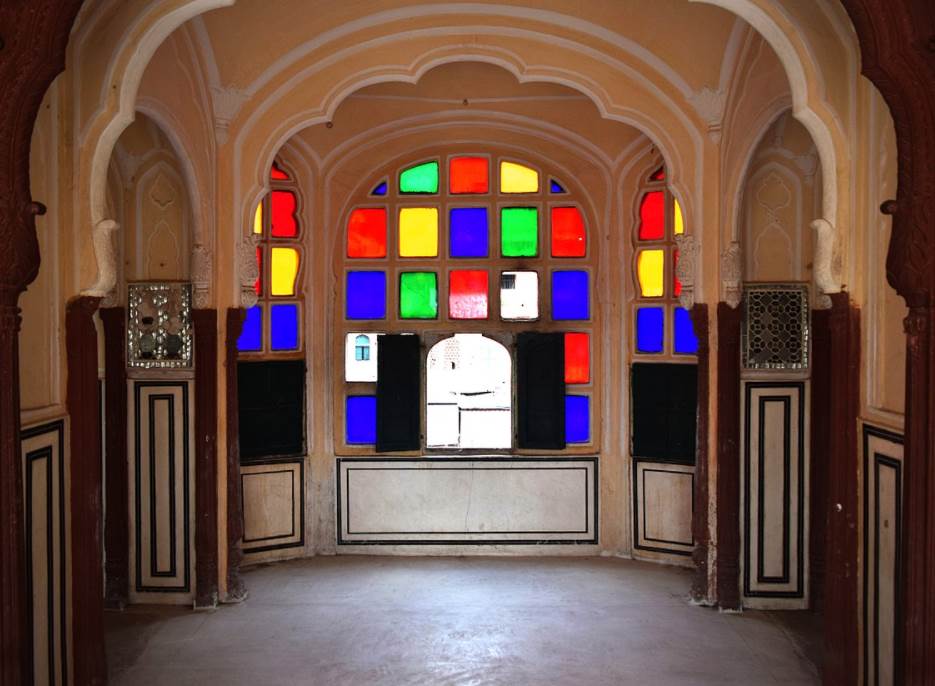
5. The name of Hawa Mahal refers to a particular effect
So what does Haa Mahal mean?
It’s a reference to an enjoyable wind effect because the literal translation of the palace’s name is “The Palace of Winds” or “The Palace of Breezes.” This effect is called the Venturi effect which allows more wind to pass through the windows due to their architectural design.
This made the palace an enjoyable place to stay during the hot summer months and one of the most famous places of the rulers of the area. The fountains located within the palace further strengthened this amazing effect.
One of the most interesting facts about Hawa Mahal is that it was named after another palace that was nicknamed the “Wind Palace” called “Khetri Mahal.” This palace is now in ruins and is located in the city of Jhunjhunu.
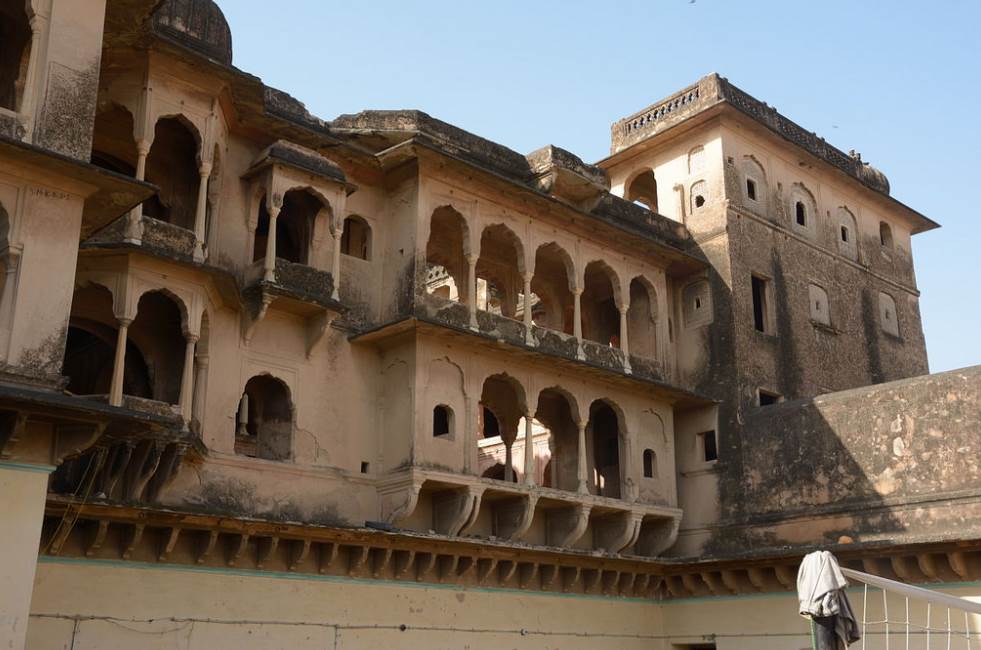
6. The palace looks impressive but is actually pretty small
It’s hard to deny that the palace looks imposing from street level. This makes it all the more remarkable that it only features 5 floors and has a height of just 15 meters (50 feet).
What’s equally remarkable is that the façade is pretty thin as well. The top 3 floors don’t extend further than a single room and the two lowest levels only feature a little patio. This inner section is also barely decorated, especially not when comparing it to the lavishly decorated exterior.
Yes, the word “façade” really explains the pink sandstone architectural marvel that is located at the back of the palace, not the front.
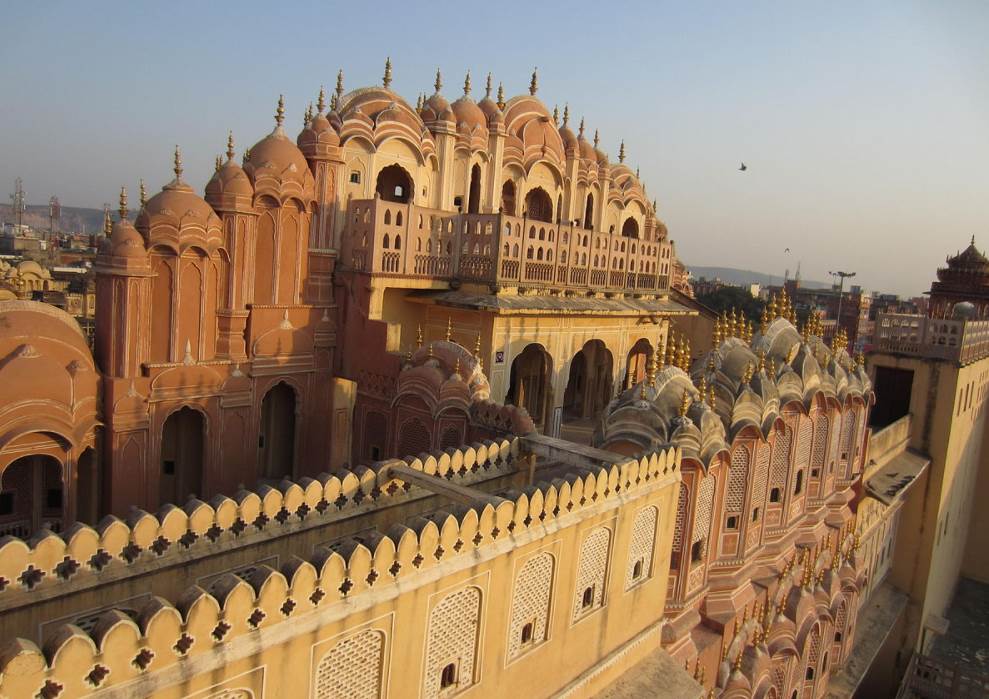
7. The design of the palace is a blend of two architectural styles
Hawa Mahal is an extraordinary building for many reasons, and the fact that it is a mix of 2 different architectural styles has something to do with that.
It’s a combination of Hindu Rajput architecture and Islamic Mughal architecture. The arches are typical Mughal elements while the domed canopies, fluted pillars, and lotus decorations are typical Rajput features.
8. The courtyard features a fountain and an archaeological museum
The inner courtyard can be accessed from the street through the so-called “Imperial door” and features relatively simple 2-storied buildings on 3 sides. The palace itself encloses it on the east side.
The courtyard features a fountain and also houses an archaeological museum where you can learn about the different types of architectural styles that emerged during the time that the city was founded.
It’s fair to conclude that this remarkable structure and museum should be on your list if you enjoy discovering the fascinating architecture in this part of the world.
